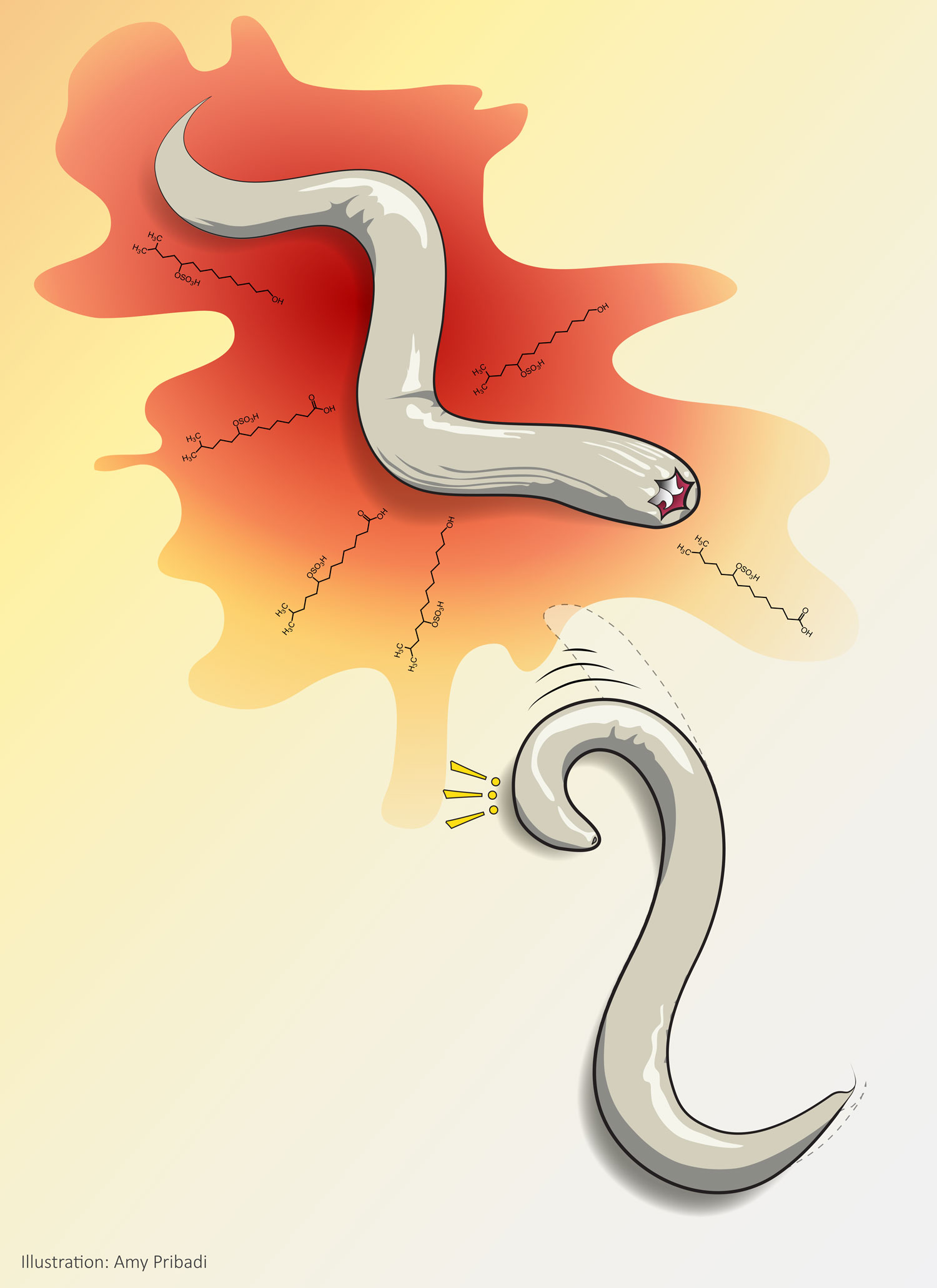Pathway in Worms to Reveal More about Human Anxiety – Scientist Study
Anxiety and depression have become something of a modern plague, with the NIH estimating that some 16 million adults in the US experienced at least one major depressive episode in 2015. For young people, rates of depression are even higher, and they appear to be getting worse still.
To get a handle on illness, researchers often turn to animal models, and depression and anxiety are no different. Various species have served as stand-ins for humans or as valuable counterpoints to our own experience.
Now, researchers at the Salk Institute have uncovered new clues about the mechanisms of fear and anxiety through an unlikely creature: the tiny nematode worm. By analyzing the responses of worms exposed to chemicals secreted by its natural predator and studying the underlying molecular pathways, the team uncovered a rudimentary fear-like response that has parallels to human anxiety.
“For the past 30 or 40 years, scientists have used simpler animals to figure out how fear might work in humans,” says Sreekanth Chalasani, associate professor in Salk’s Molecular Neurobiology Laboratory and senior author of the paper. “The idea has been that if you could figure out which underlying signals in the brain are related to fear and anxiety, you could develop better drugs to block them
.”
The study, using the interactions between Caenorhabditis elegans and its predator, Pristionchus pacificus, demonstrates the neuronal perception by C. elegans of a predator-specific molecular signature induces instantaneous escape behavior and a prolonged reduction in oviposition.
“For years, we thought that only advanced brains like those of mammals would have this complex reaction,” Chalasani says. “But our study is showing that a simple animal expresses something very much like fear.”
Chalasani, with coauthor and UC San Diego graduate student Amy Pribadi, as part of the study, soaked C. elegans in a solution containing the sulfolipid for 30 minutes. The worms failed to lay eggs, even for an hour after they had been removed from the solution—an indicator of acute stress as well as a longer-term response akin to anxiety.
Further research showed that the signaling pathways activated during the worms’ response are similar to the pathways activated when more complex animals experience fear.
When the worms were soaked in a solution containing Zoloft (a human anti-anxiety drug), however, these fear- and anxiety-like responses were not observed. This suggested that at least some of the pathways that the drug acts on to eliminate anxiety in mammals have been preserved by evolution.
“We hope the findings from this paper will contribute to the field by providing a broader picture of some of these signaling activities,” Chalasani says. “Our findings suggest that fear and anxiety are ancient and evolved much earlier than we originally thought. The pathways, nerves, circuits and genes that we’ll now be able to study in the worm should inform us about this process in humans.”
In addition, he says, understanding which chemicals may repel nematodes could have implications for developing new kinds of pesticides, potentially ones that are even nontoxic. “C. elegans is not a pathogen, but many other types of nematodes can do severe damage to crops,” he explains. “Biology research can go in many different directions, and you never know what you’re going to uncover.”






























